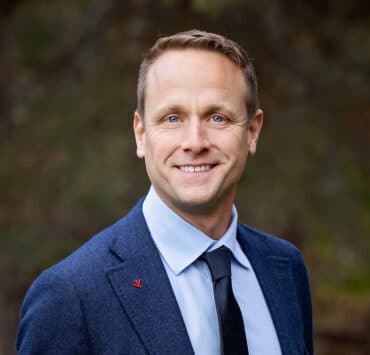|
Getting your Trinity Audio player ready... |
To understand HR benefits is to understand the human life cycle. With studies in early childhood and family and work as a program development director at the Indiana Association for the Education of Young Children, Candace Shaffer possesses foundational knowledge of that cycle. This unique perspective informs her decisions as senior director for benefits at Purdue University, where benefits serve a wide range of people.
“We have individuals using benefits who are eighteen and fresh out of high school, all the way to some in their eighties and sometimes into their nineties . . . all the stages of life. We have to offer benefit programs and information for that entire life span,” Shaffer says.
In her role, Shaffer strategizes and executes all benefits, which are housed under a program called Healthy Boiler. After attending Purdue as a student, Shaffer’s alma mater hired her in 2014, and she became director of benefits in 2017. In 2020, she was promoted to senior director; she currently oversees twenty-six employees in the benefits department and has four direct reports.
“In the past five years, engagement has tripled and on a per-member, per-year basis our members save well over one thousand dollars per year on their medical costs.”
Candace Shaffer
One of her biggest challenges, she says, is creating a benefits package that’s cost-effective for everyone, offers quality care, and most importantly, is easy to understand. “If it’s not, nobody will use it,” she says.
Originally launched as an incentive program in 2018, Healthy Boiler has blossomed into a comprehensive healthcare program comprising five pillars of wellness: physical, behavioral, financial, social, and work-life integration. “All our benefits fall beneath these five pillars of wellness, because we believe that you need to be well or healthy across all five of those areas to be a good employee or a good spouse or parent or friend or sibling. To have a good life,” Shaffer says.
Expanding Healthy Boiler from an incentive program to a comprehensive wellness program was purely data driven. Shaffer gathered data through employee feedback and the consolidation of benefits-related service tickets into quarterly reports highlighting the issues that most concerned employees and the time to resolution.
“What was the data telling us? What were we spending all our money on?” she asks. Shaffer used the data to improve Purdue’s healthcare benefits and save the university and its employees money.
The biggest of those changes was replacing its employer clinic operating partner, with which Shaffer had grown unhappy. She searched for one with proven positive outcomes running a campus clinic, addressing chronic conditions, practicing lifestyle medicine, and reducing costs. “After all, our employees spend a lot of their own money,” she says.
Her goal was to flatten Purdue’s trend on costs, while improving employee health without compromising quality. “We could put cheap programs in and not worry about how healthy our population is and their families, but that’s not what we want. We want them healthy and taken care of when they need care,” she says.
Purdue ultimately partnered with One to One Health. Almost immediately One to One opened a clinic on the university’s main campus in West Lafayette and recently opened a second on a regional campus. Since partnering with One to One, Shaffer has seen a marked improvement.
“We have a team of passionate people, and we try to make sure we include everybody and challenge each other.”
Candace Shaffer
“In the past five years, engagement has tripled; and on a per-member, per-year basis, our members save well over one thousand dollars per year on their medical costs,” she says. Purdue’s healthcare costs have not gone up in five years.
Employees are not just saving money, they are becoming healthier. Since partnering with One to One and launching the Healthy Boiler incentive program, Purdue employees are more compliant than ever regarding screenings and physicals, instrumental in identifying and preventing chronic health conditions leading to higher healthcare costs.
“Our physical compliance was in the 30 percent range in 2017, and we’re now actually close to 60 percent for our adults. Having someone in place to help manage healthcare for a large portion of our membership has been critical,” Shaffer says. Her data also show that employees are making fewer trips to the ER.
In the pharmacy arena, Shaffer now has the specialty prescriptions managed by a specialty pharmacy group, which carved out specialty prescriptions from both its medical and prescription plan and focuses on clinical need. Every three months patients’ prescriptions are reviewed to determine if they’re still necessary and whether they have been effective. “We have found that over time this has saved money and also made people clinically healthier,” she says.
Shaffer knows the value of surrounding herself with a solid, knowledgeable team, where all members have a seat at the table. She says, “Over the years, I’ve made sure I have all the right people [around me]. I have financial people, benefits experts, leave experts, and customer service experts. We have a team of passionate people, and we try to make sure we include everybody and challenge each other.”
A full-service agency specializing in employee communications, Westcomm works alongside Purdue University to create innovative communication strategies that cut through the clutter and confusion, allowing for smarter use of employee benefits, better retention of top talent, fewer employee questions, higher utilization of preventive care, and smooth onboarding of new hires.

